Have you ever sat down to get a project done and ended up just staring at a screen for hours on end?
You know exactly what you need to do. You’ve seen examples that inspired you, woken up in the middle of the night with a genius addition, exclaimed to your team that you’ve got this. But there you are...staring at a blinking cursor and all those ideas are gone.
Yeah, us too.
Not anymore though. We’re putting an end to blank pages and blinking cursors for projects that involve writing quality PPC ad copy that converts.
We’re putting our team’s Google Searches to good use, as well as all the proven strategies we’ve confirmed with our clients.
If you’re struggling to think of effective ad copy for your PPC advertising, we’ve gathered the best tips, tricks, and examples from all different industries, for all different stages of the funnel.
By the end of this, you’ll know exactly how and what to write for a great ad. Start planning that send-off party for your writer’s block now.
PPC ad copy in Google Ads has an endless sea of different tactics and strategies.
And, with Google Ads constantly updating and subtly changing its text ad formats, it’s no surprise that new PPC ad copy guides pop up on the SERP every day.
But what’s important to remember is that there are certain tried-and-true strategies that are applicable across all PPC ad formats.
There are specific tactics for research, writing, and optimizing your PPC ad copy that can almost always be relied upon. After that, enhancing your PPC ad copy and improving your Click-Through-Rates becomes a matter of creativity and patient testing.
So, for your benefit, this post will walk you through the basics of the Google Ads text ad format and the starting blocks of writing your PPC ad copy.
Get brand new PPC strategies straight to your inbox every week. 23,739 people already are!
PPC Ad Format
Before you get started on improving your PPC ad copy for more conversions, it’s important you know the ins-and-outs of Google Ads’ PPC text ad format.
You can’t very well know how to make the most out of a text ad without knowing what readers are paying the most attention to in the first place.
Identifying which parts of your text ads will drive the biggest conversion rate jumps when you change them is crucial for efficient CTR and CRO testing.
Here’s a nice example of the anatomy of a PPC text ad:
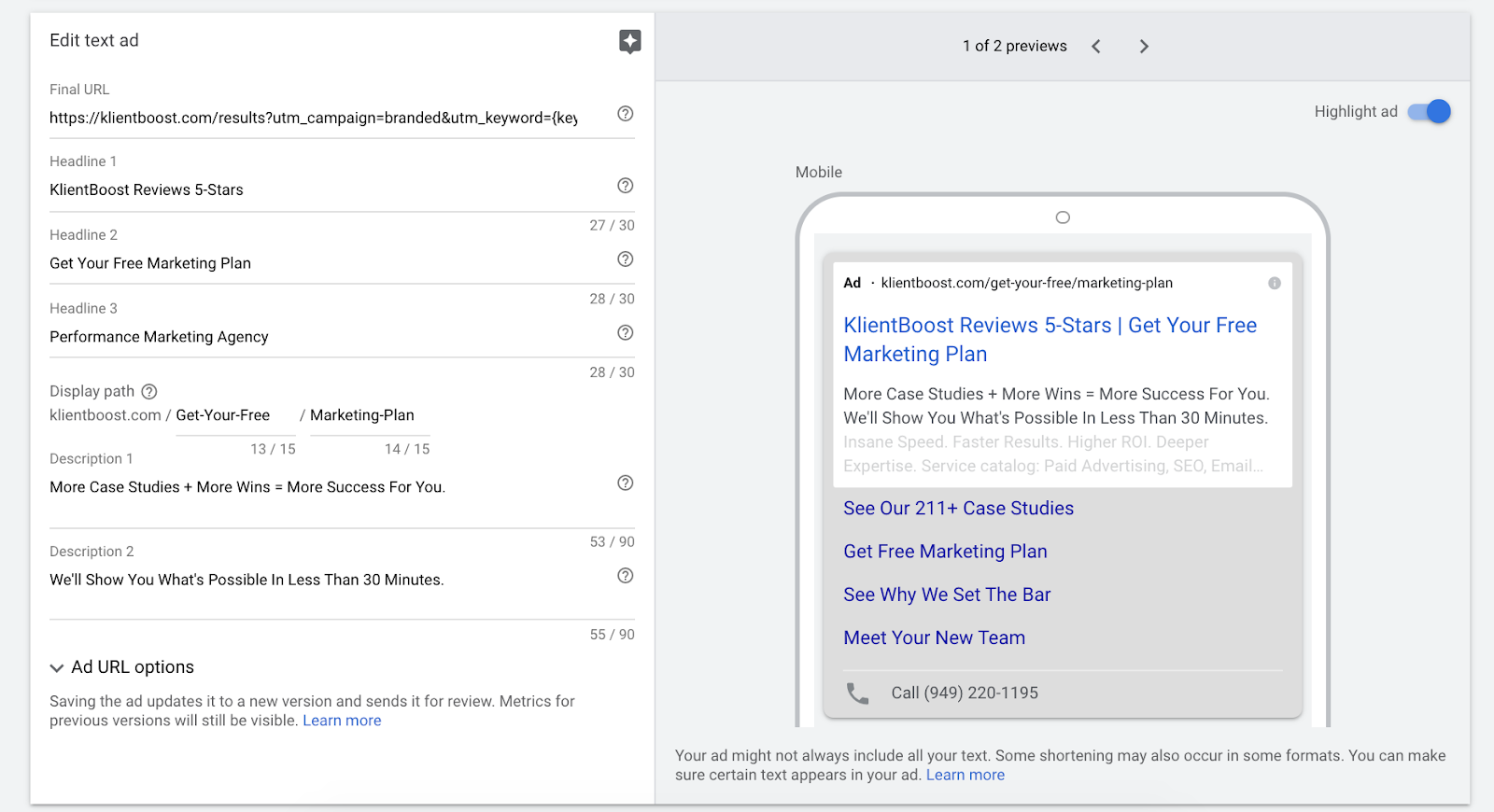
As you can see in the screenshot, your first, second, and third headlines are what constitute the majority of your ad.
All three of these headlines appear in nice, highlighted blue text above the actual goal URL for your ad — and they’ll most likely be the biggest draw to users clicking on your ads.
The goal URL is displayed directly beneath your headlines.
And, lastly, you have your description (both 1 and 2) which come in the form of the ad copy on the bottom half of the ad.
The ad copy in your description is where you can start to get really specific into your offer as you aren’t restricted to getting your keywords so densely packed into your character limit.
NOTE: Keep in mind that, according to the Gospel of SKAGs, you should be trying to get your exact match keyword into each of the headlines and descriptions of your ads for ultimate search term relevance.
Writing Your PPC Ad Copy
Now that you know how to make your way around a PPC text ad, it’s time you get to writing and optimizing these bad boys!
And no, before you get excited, “letting the creative juices flow” doesn’t mean you can just start spamming off dozens of ads without doing your due diligence. That’s an easy way to burn a lot of budget.
So, to keep you on track, here are those tried-and-true strategies I mentioned earlier.
Competitive Research
All good digital marketing strategies begin, continue, and end with competitive research.
Unless you are marketing in a vacuum without any competition (in which case we all envy you) you’re going to need to know what your competition is up to in order to distinguish yourself from the rest of the crowd.
This can be as simple as opening up your Google Chrome Incognito Window and searching your top 5 most frequently searched keywords. You might see some ads showing from brands you’ve never heard of before.
Needless to say, if their ads are showing for your top 5 keywords — it’s time to throw up some fisticuffs PPC style.
This means not only identifying what your competitors are doing with their PPC ad copy to stay relevant. But also what they might be doing to increase their CTR’s and differentiate their brands and their offers from the rest of the competition.
The more unique you can appear to new and interested users, the more likely you are to pull their attention away from the masses of digital marketers all trying to do the same thing.
Ad Extensions
Ad Extensions are more of a clean-cut action item than they are an overarching strategy. Nevertheless, they’re a powerful ad copy tool that PPC advertisers can leverage to provide more information to their users and increase both engagement and qualified clicks.
Ad Extensions can perform different tasks depending on how you choose to use them. They can help up-sell different, related offers to interested users, provide necessary pricing information to on-the-fence customers, and even show different locations and quick-call numbers for location-based businesses looking to segment their traffic by relevancy and location.
Regardless of which avenue you find yourself walking down, Ad Extensions are an easy way to give yourself more room to work with in your PPC ad copy.
And the more room you have to write the more valuable, informative, and powerful your ads can become.
CTAs And Traffic Temperature
Lastly, a strategy that is often overlooked when it comes to PPC ad copy, is the use of calls to action (CTAs) and aligning them with the conversion temperature of your traffic.
We’ll get into traffic temperature in more depth a little later on in this post. But for now, all you need to know is that certain users that see your ad are “colder” and others are “hotter,” based on their conversion intent respectively.
Don’t be afraid to use direct and actionable CTAs in your PPC ad copy — especially in the headlines of your ads. But keep in mind the traffic temperature of your incoming searchers.
If you’re running ads on top-of-the-funnel keywords that are generating beginning level interest, you don’t want to scare potential conversions away with too much of a bottom-funnel CTA like “buy now” or “call us today.”
Sometimes taking the long walk is worth a cleaner drink of water.
35 Cures To Your PPC Ad Copy Writer’s Block
Now, even if you know everything there is to know about the Google Ads text ad format, there comes a point where you hit a wall and your creative juices seem to have run dry.
Or maybe you’ve been writing PPC ad copy for quite some time and it feels like you’ve tried all things possible, yet your campaign’s performance results are plateauing.
Ever had writer’s block?
Sometimes trying to concoct the ideal mix of ingredients can leave you dazed and confused, and with a blend of words that performs less than perfect.
To help you energize your ad copy with recipes that work, the best ppc ad copy tips fall under these six main considerations:
- Being Relevant
- Headlines
- Emotions Triggered
- Benefits Focused
- Repetition
- Grammar and Format
Being Relevant
Let’s start off with a seemingly obvious set of tactics: how to keep your ads relevant to the right users.
We all know the perils of The Iceberg Effect and the importance of aligning your keywords with the right type of search terms by using SKAGs.
But relevance is so much more than getting in front of the right crowd. Once you’re there, you have to know how to keep their attention and drive them towards a qualified conversion.
PPC Ad Copy Tip #1: Reflect the Visitor’s Goal
A way to be super relevant to your visitor is to mirror their goal in your ad copy.
Think from your visitor’s perspective and write your PPC ad copy so it addresses their specific need and their specific stage in the buying cycle.
Then use those specific keywords in your ad copy.
Here’s an example of a group of keywords that reflect three different goals and three different stages of the buying cycle:
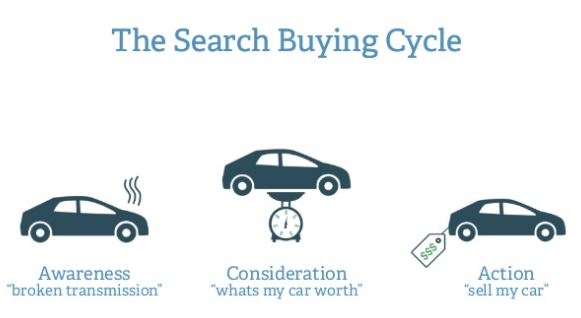
By being aware of your visitors’ distinct stages of the buying cycle, you can tailor your PPC ad copy to those specific goals and keywords.
Depending on the traffic sources, too, you’ll want to tailor your ad messaging.
There’s a PPC traffic temperature scale that we like to reference when writing our ad copy. We do this so we know which types of offers and CTAs to feature on our landing pages.
The PPC temperature scale helps us understand the intent temperature of our visitors. Visitors that come from Search tend to have warmer intents and visitors that come from Display tend to have colder intents.
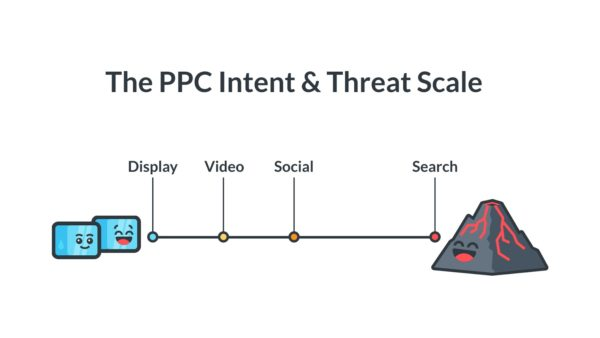
From there, we determine the landing page offer. Here are some ideas based on PPC channel temperature:
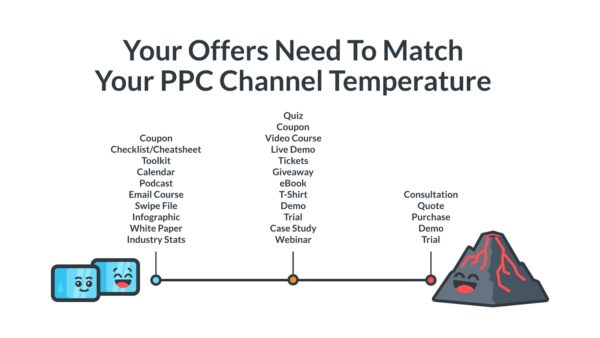
PPC Ad Copy Tip #2: Beat Your Visitors to Addressing Their Objections
Don’t let your visitors think of objections on their own. Beat them to the punchline and respond to their objections before they even get a chance to dwell on them.
This’ll help reduce risk in your visitors’ minds and give you a chance to show off how you can resolve their issues in life.
Here’s an ad from McDonalds that addresses any concern of difficulty ordering online right off the bat:

For those just looking to get a meal delivered, they can rest assured that with McDonald’s they can not only get exactly what they’re craving, but that the process will be easy. From payment to delivery.
Tip: Talk to your sales team about your prospect’s FAQs and use those answers as part of your PPC ad copy testing.
PPC Ad Copy Tip #3: Pre-qualify Clicks
This one’s especially useful for premium offers. If you have a premium product with a higher sticker price, include your price in your ad copy.
This will help you pre-qualify your visitors and not shock them with the sticker price on the actual landing page.
Including expensive dollar amounts upfront in your ad copy will cut through the non-serious leads and prospects and attract visitors willing to pay the premium price.
Researchers at Carnegie Mellon University identified something called the Pain of Paying, where they found that people will spend money until it hurts.
George Loewenstein, one of the researchers of the study, described an electric moment:
“We were so excited when we got the results from the first scans, and saw that the insula, a section of the brain associated with pain processing, activated when subjects saw prices that were too high… It was an electric moment.”
Don’t add extra pain to your visitors by shocking them on your landing page with a high price that’s undisclosed in your PPC ad copy.
PPC Ad Copy Tip #4: Consider the Decision-Making Cycle
Also known as the buyer’s cycle, the conversion cycle and the action cycle, the decision-making cycle allows you to recognize and cater to different visitor needs.
It’s a way to segment out your audience so not all visitors are treated the same.
This is the conversion funnel framework we use when tailoring our ad copy:
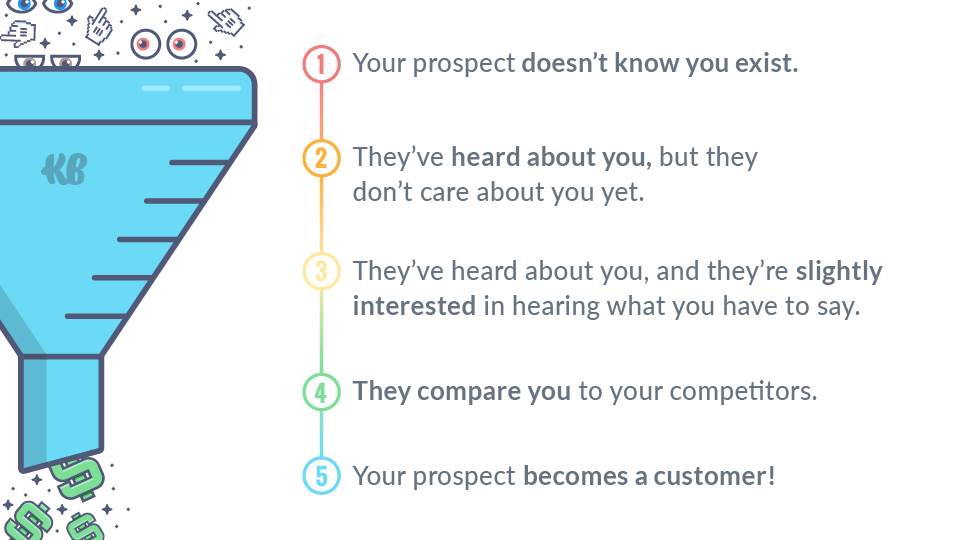
PPC Ad Copy Tip #5: Avoid Robotic Language and Use Personalized Copy
By using a tone or voice similar to the customer’s, you can appear to be more relatable and human with your ads.
Try being conversational. Here’s a good example:

Not only did the ad have a realistic question-answer format in the headline, but it also comes off as personal.
The Headline acknowledges the reader’s concern in the same way you might ask a friend. Then the description goes more into detail about how and why their solution is right for you.
PPC Ad Copy Tip #6: Mobile-Specific Groups and Campaigns
People behave differently on their mobile devices vs their desktops vs their tablets, so it can be advantageous to personalize your ad copy even more by segmenting across devices.
By focusing on device-based ads you can tailor your messages using mobile-specific ad copy to differentiate from the other devices.
Ad text customizers are a Google Ads feature that allows you to create a text ad with a headline or description customizer specifically for mobile ads.
You can choose mobile or all within your Google Ads standard attributes while setting up your ad customizer:

Do This: Since you can only choose between mobile and all device preference attributes, you’ll want to write two separate ad copies for each category.
PPC Ad Copy Tip #7: Ad Extensions
Ad extensions can help your visitors learn more about your services without even having to click. Plus, they take up more real estate on the search engine results page (SERP) if your ad ranks high enough so you’ll likely stand out more.
Some current ad extension options include:
- Location extensions (find the store or sellers)
- Callout extensions (such as “free delivery” or “24/7 customer support”)
- Call extensions (a phone number or call button)
- Sitelink extensions (link directly to hours or an order page, etc.)
- Price extensions (browse products right from the ad)
- App Extensions (directly download the ap)
- Lead Form Extensions (sign up forms)
Here’s the ad that popped up at the top, when I searched for “lasik”:

The ad extensions add relevancy to the visitor’s life because now the visitor can see:
- Seller reviews for credibility
- Learn more about the company
- Get more info about why they’re newsworthy
- Know exactly how to contact them
All that extra info creates more relevancy to the visitor.
PPC Ad Copy Tip #8: Be Geographically Specific
You can control your PPC campaigns down to the city, so take advantage and reflect that in your ad copy.
Appearing to be local can help you be more relevant and familiar to your visitors.
Here are examples of ads for dentists near Orange County:
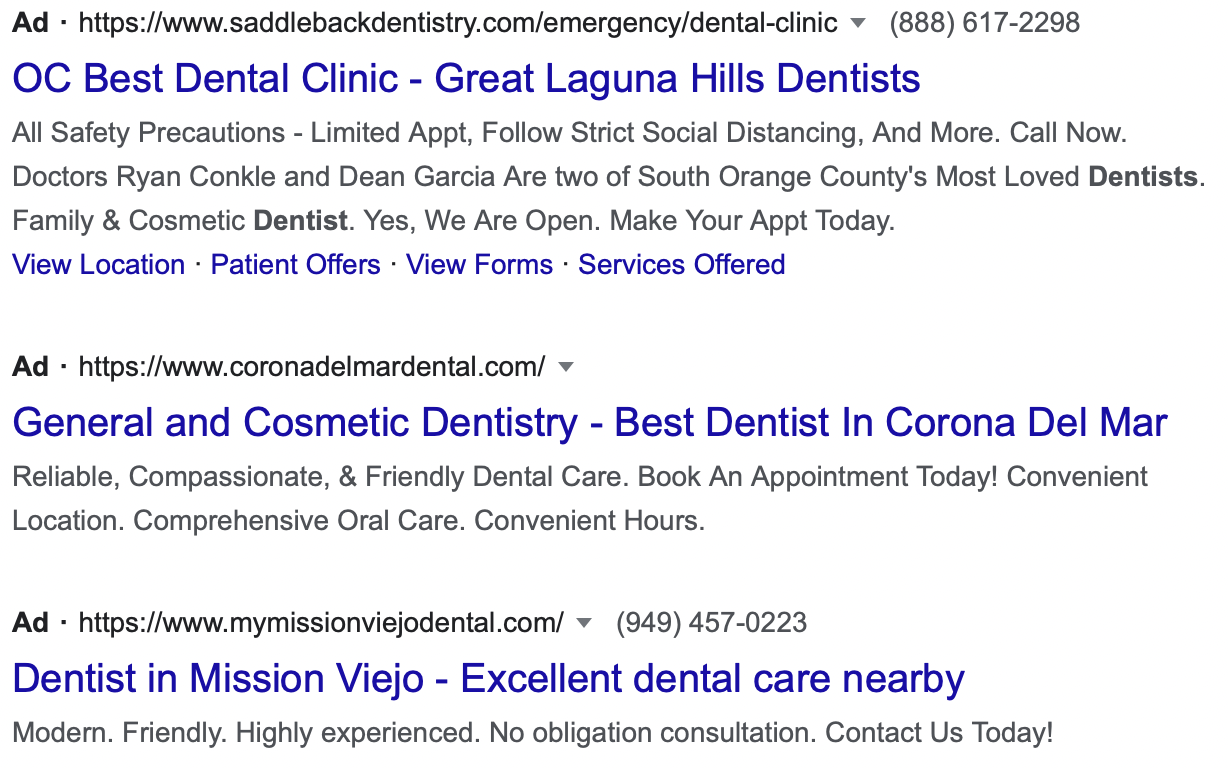
Tip: If you create a designated landing page with location specifically in the URL you will have the most granular geographic tracking.
PPC Ad Copy Tip #9: Refer to Organic Search Results
We mentioned competitive research earlier by looking at other ads, but you definitely don’t want to forget about the organic results.
Do a search for the keyword you’re looking to target and see what the top few organic results are. Do you see anything in common? What catches your eye?
You don’t want to copy them directly because you are competing with them after all. Use that info as your ammo. If the top result boasts a 15% discount, you know you should be offering 20% in your ad.
Headlines
Tips 10-13 are all about making the most of the headline section within the PPC ad format.
Seeing as up to 80% of the time, headlines are the only part of the ads that are being read, there are plenty of opportunities to increase your CTR here.
PPC Ad Copy Tip #10: Include Exact Numbers
Writing your headlines with stats and numbers, like live inventory data or pricing, can help entice your visitors to your offer.
By including pricing, you get straight to the point and so do your visitors. They should already have a decent idea of what they’re willing to pay for something, so including an exact number can help them decide right there on the spot.
According to The Negotiation Experts’ Roger Dawson:
“People believe exact numbers more so than they believe rounded numbers.The Ivory Soap people learned this out decades ago when they started claiming ‘Ivory Soap is 99.44 percent pure.’ Obviously we wouldn’t challenge them if they told us that Ivory Soap was 100 percent pure; but the precise figure is subliminally more plausible.”
Plus, if you actually score an ad click, it’ll likely be from a qualified visitor who thinks your price point is agreeable.
Here’s two examples of two not as obvious ways to use exact numbers:


Here are some PPC ad copy results that popped up when I searched “car rental LAX ”:
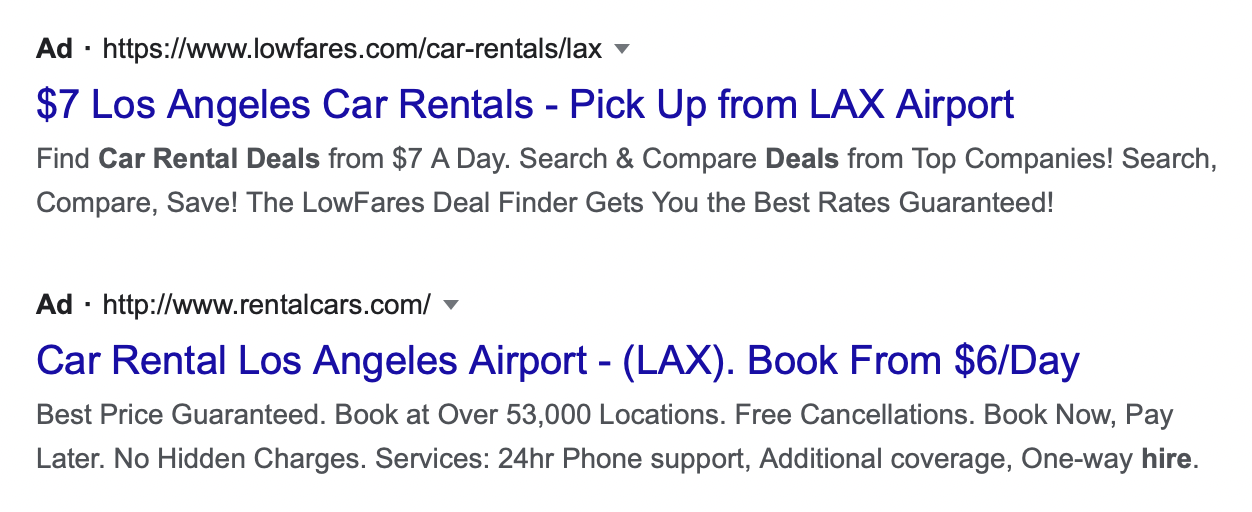
Here’s an example of ad copy that includes both the price and percent off:

And here’s an example of where you would add live inventory stats to your ad copy:
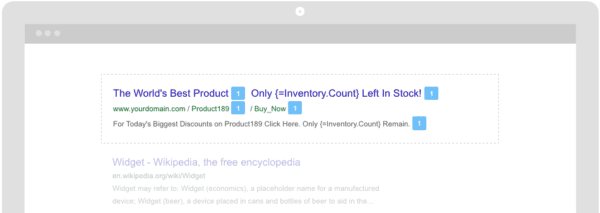
PPC Ad Copy Tip #11: Prioritize the Headline
The headline is the most obvious part of your PPC ad, so take advantage and make every word count.
By focusing on your headline, you’ll be able to address the most important part of your ad. Your visitors are likely to notice and read your headline first and foremost, making your other ad copy secondary.
The reason for this is the serial position effect, where people tend to remember the first few and last few words (and likely forget about the ones in lost in the middle).
Here’s what it looks like in graph form:
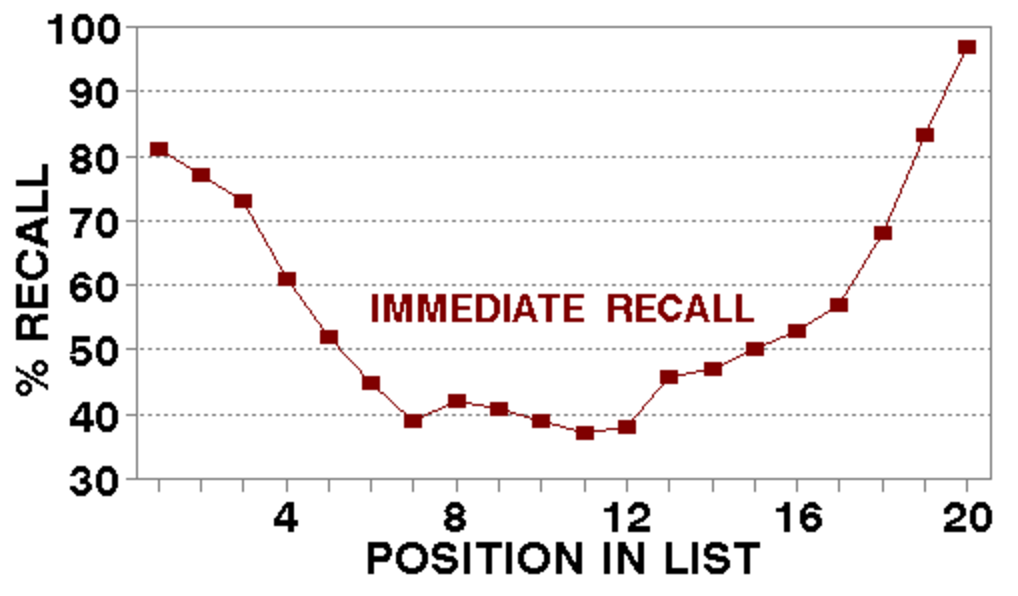
Because your ad headline is so much larger in size than the rest of your ad, it’ll really be the most prominent and memorable copy.
PPC Ad Copy Tip #12: Use the Search Term
By including your search term in the headline you can have the flexibility of appealing to a wider audience yet appearing to be more local and relevant to your visitors’ searches… right from the headline, the most prominent part of your ad.
Some people use keyword insertion to tailor their ad messaging to the specific searches their visitors are inputting.
Here’s an example:


PPC Ad Copy Tip #13: Guide with a Call-To-Action (CTA)
Your CTA is your big chance to trigger an opt-in from your visitor. It’s your main opportunity to nudge people to click on your ad, so make it count and include your CTA in your headline.
You can use an actionable and specific CTA in your ad copy, so your visitors are explicitly aware about what will happen once they click on your ad.
Here are some examples of CTAs where the ad copy is keyword-rich, and provides value and a sense of urgency:
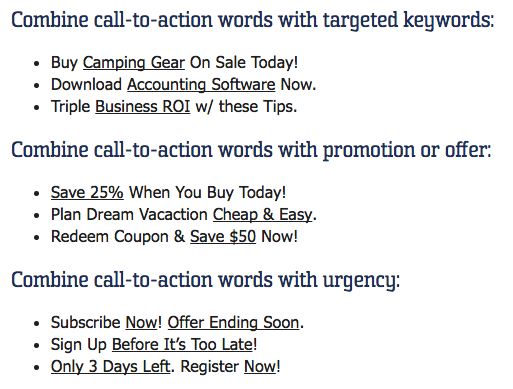
Want more CTA tips? Here are 37 proven ways to create the strongest CTA copy.
Although these ideas cater to CTAs on landing pages, you can apply the concepts to the CTA in your ad copy, too.
Warning: Not all CTAs are created equal.
Consider where your visitors are in the conversion funnel. Your ad copy will likely include a lead generating or top-of-funnel CTA, where you need to exchange information first before your visitor feels comfortable enough to convert.
Emotions Triggered
Our next seven tactics (14-21) will focus on engaging users on an emotional level.
Remember that, regardless of whether you’re dealing with a B2B market or B2C customers, every marketing campaign ends up coming down to an H2H interaction — human to human.
PPC Ad Copy Tip #14: Appeal to FOMO
You can use the loss aversion psychology concept to create a fear-of-missing-out (FOMO) for your visitors. This’ll help your offer be even more irresistible.
Best situations to appeal to FOMO in your PPC ad copy are when you have sales, promotions or exclusives to offer in your ad copy.
Here’s a Forever21 example of a limited time discount offer:

The ad copy makes the visitor feel like they’ll miss out on the deep discount if they don’t act now.
Tip: Try coupling the FOMO concept with a countdown timer in your PPC ad copy. Testing out this combination could potentially bring you an impactful FOMO ad.
PPC Ad Copy Tip #15: Inflate the User’s Ego
By tapping into your visitor’s sense of entitlement you can make your ad copy all about your visitor.
Just like the psychology behind identity and feeling a sense of self and belonging, there’s a theory of self-interest you can take advantage of while copywriting.
People care about themselves and their egos, so focus your ad copy on your visitors. Let them know explicitly how your offer will improve their lives.
Make your visitors feel unique, special and important.
PPC Ad Copy #16: Keep Your Promises
Stick to your word and deliver what you say you will in your ad. The last thing your visitor wants is to be tricked by tomfoolery.
This one goes beyond PPC and steps into conversion rate optimization (CRO).
If your PPC ad copy can’t message match your landing page, then don’t include the enticing tease to begin with. It’s a landing page best practice to message match and repeat your ad copy on your landing page.
If you offer free shipping in your ad copy, offer free shipping on your landing page. If you offer a free service in your ad, don’t just offer a free trial.
Here’s an example of ad copy that keeps only a half promise (which counts as a misleading trick):
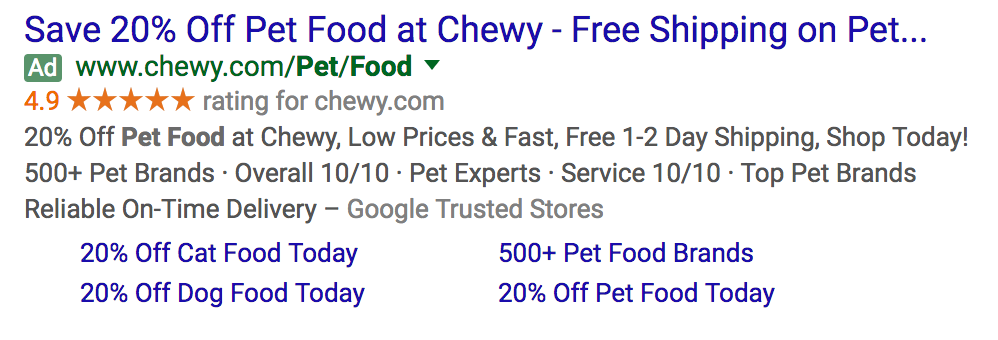
The ad leads to this landing page:
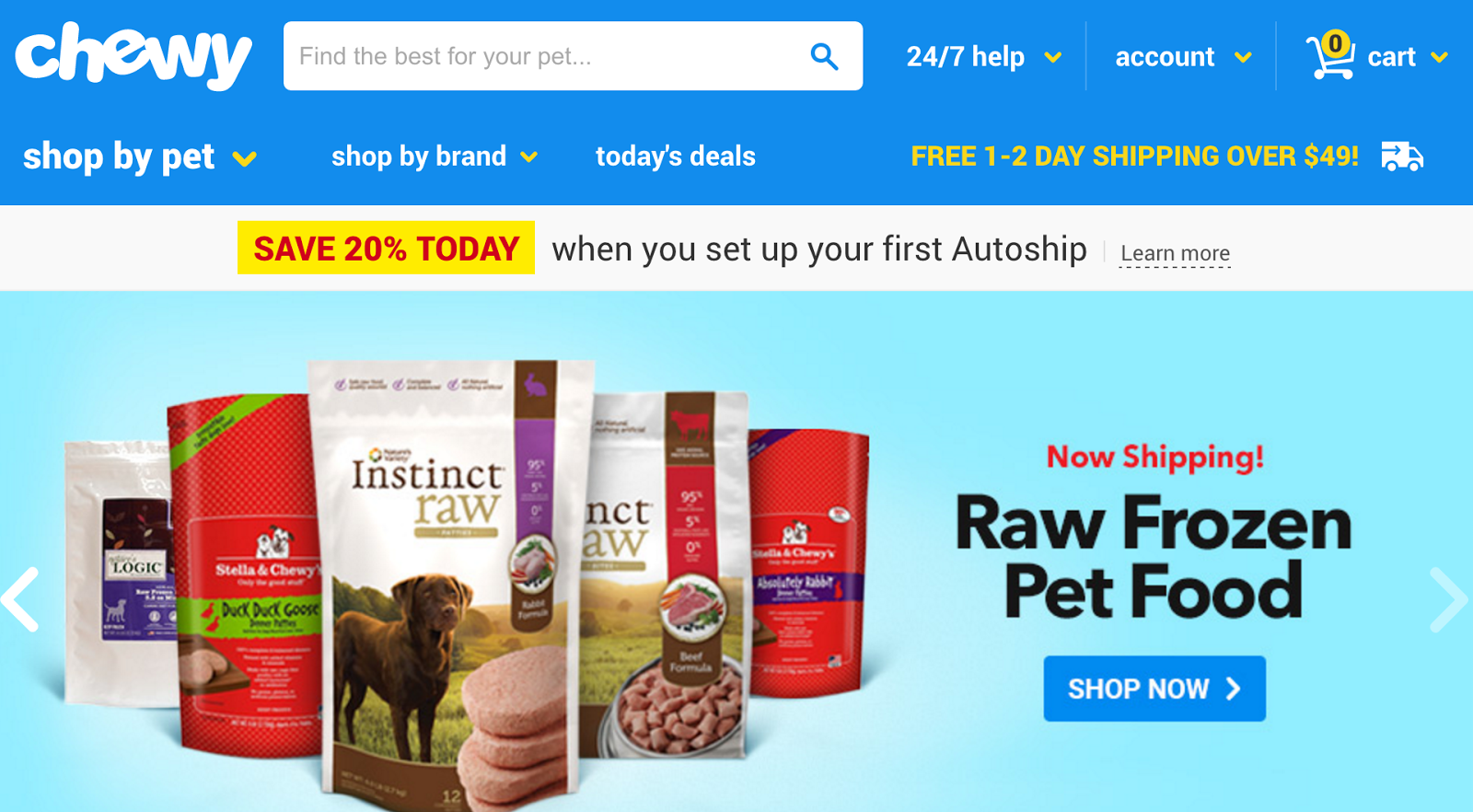
The 20% savings are given to the visitor only if they set up an Autoship, and the free shipping is offered to orders over $49.
Kind of a letdown. Partial promises don’t count as keeping your promise.
#tryharder ?
PPC Ad Copy #17: Consider Perceived Value
According to Small Business:
“Perceived value is a more abstract measurement that represents how much customers feel a product is worth.”
How to get your perceived value message across?
Write ad copy that’s in your visitor’s language instead of your industry’s language. This can help you present your offer in a more credible way that reduces risk in your visitor’s brain.
When you speak in terms of industry jargon, your offer can come off as foreign and can make it more difficult for your visitors to grasp the benefit you’re trying to relay.
Bonus Tip: Tap into the total customer benefit when writing your PPC ad copy and weigh them against the total customer cost.
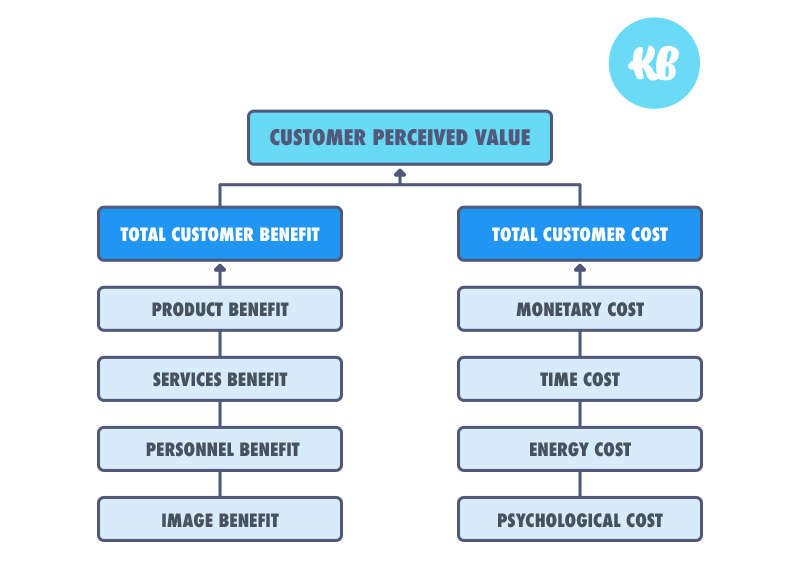
PPC Ad Copy Tip #18: Trigger Pain or Fear
Whether it’s fear or negative consequences that you tap into, triggering pain in your PPC ad copy can be an effective way to engage your visitors.
It helps to create a sense of urgency and a more immediate need to resolve the issue or need.
Here’s an example of an ad that triggers pain:

Here’s an ad that speaks to negative consequences:

PPC Ad Copy Tip #19: Establish Credibility
If you have a product listing ad, you can build credibility through your star rating. You can also give satisfaction promises and show off industry awards.
Here’s an ad that has all three working in its favor:
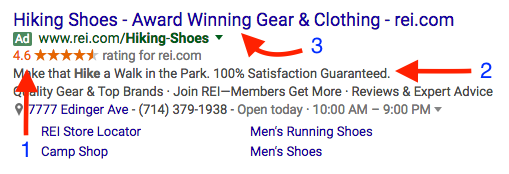
Visitors are naturally wary of ads.
According to Steve Olenski’s Forbes article:
“I don’t care what medium we’re talking about – from traditional to digital to mobile to social media, when it comes to advertising, people will always look at it with a jaded eye.”
Making your visitors feel confident in your offer can help to reduce the feeling of risk that comes with clicking on any ad.
PPC Ad Copy Tip #20: Catchphrases
Add catchphrases to the list of underestimated copy ideas. If you’ve already established credibility towards a phrase, use that to your advantage.
Or, alternatively, if there’s a catchphrase you’re using in other marketing channels, seeing that same catchphrase in your PPC ad copy will help to hammer the idea home.
A great example is Bounty:

PPC Ad Copy Tip #21: Use Pain or Fear
Pain and fear are powerful emotions that, if used correctly, can influence action. While it may sound a little harsh off the bat, there’s a way to utilize the two emotions to create a fast connection with your audience.
A great example are these two dog walking ads. They don’t incite fear, but rather acknowledge and empathize with it. It adds a deeper emotional level to what is normally just a transactional service.
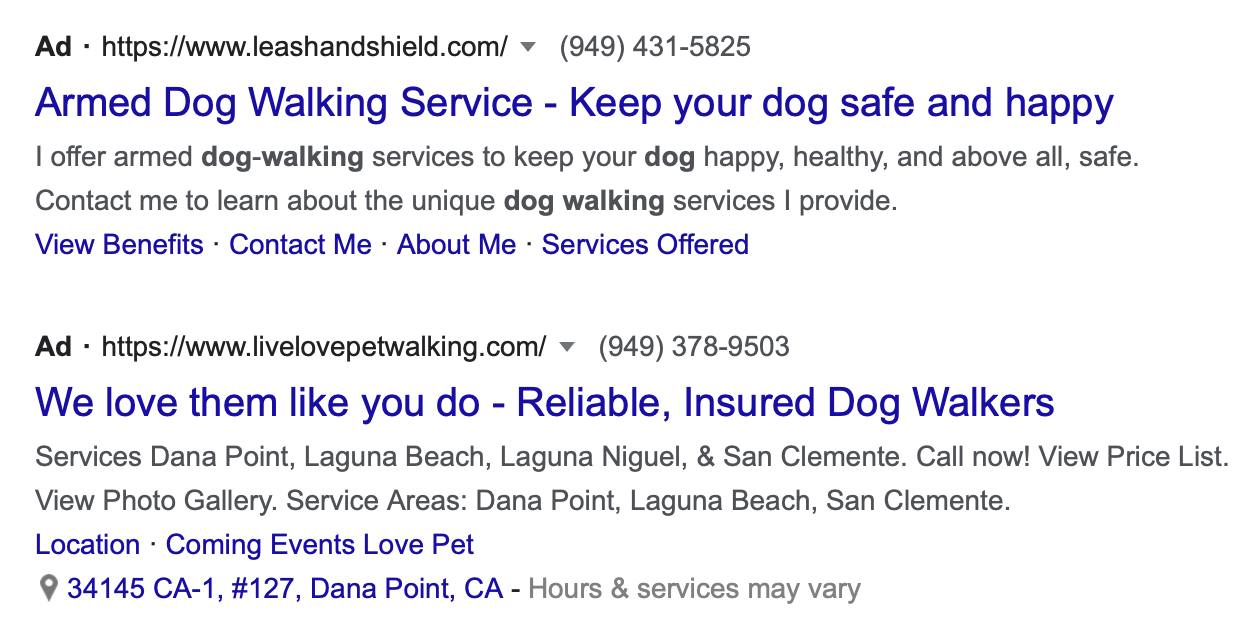
Benefits Focused
Remember that not every user is going to know how awesome your brand or product is right off the bat. It’s your job to explain to them what makes you so special.
Not only that, it’s your job to explain your benefits in a way that users understand how you can help them in their lives.
You shouldn’t be explaining the benefits of your product/service to your potential customers in the same way you do with your management team.
You need to identify which pain point this specific product/service is solving for your users. This is what you focus your discussion around — saving their time, saving their money, making their jobs easier, etc.
PPC Ad Copy Tip #22: Be Customer Focused
Make everything in your ad copy about your visitor. You’ve heard this before.
By being customer focused in your ad copy, you can better convince your visitors to become customers.
It’s all about solving their problems and making their lives easier and better. Explicitly tell them how your benefits will help them.
Take a cue from Copy Hackers’s Joanna Wiebe and remove any copywriting that includes “we.”
“‘We’ is a bad, bad word in copywriting. You should reword every line of copy you have that begins with ‘we’.”
While you’re at it, remove those references to “I, us, myself and me,” too.
People don’t want to hear about you, even though you’re the one offering the benefit. They want to hear about themselves and how you can improve their situation and their lives.
PPC Ad Copy Tip #23: Use a Differentiator
Stand out from your competition and show off what makes your offer truly unique.
Ask yourself:
- Why should your visitors opt into your offer over someone else’s?
- Is it your brand name?
- Is it your benefits?
You can contrast this with that in your ad copy. Here’s an example:

The pet hotel solution was swapped out with a dog sitting service, and then the cost was featured in the ad copy as a clear differentiating benefit.
Pointing out your unique selling proposition (USP) in an obvious way can help your visitors understand your offer’s benefits and the value it’ll bring to their individual life.
PPC Ad Copy Tip #24: Avoid Choice Fatigue
Not only is it important to differentiate yourself from your competitors with your unique value proposition (UVP) and your USP, but standing out with your ad copy also has its major benefits.
For example, Dynamic Keyword Insertion (DKI) is a useful automatic keyword insertion tactic that can drive clicks from your ad copy… but if nearly everyone in your industry space is doing it, you won’t be any different.
The fix?
Check out what your competitors are doing with a manual search query and if their ad copy starts to drone on the same text, then you know it’s time to really stand out.
Choice fatigue wears on your visitors and makes them have to think more than they want to about.
According to Neuromarketing’s Roger Dooley:
- Offering too many choices can actually reduce sales
- Forcing a consumer to make a series of decisions will tire them out
Making a decision should be easy.
Don’t be the same as everyone else and write PPC ad copy that’s relevant yet different.
PPC Ad Copy Tip #25: Show Special Value
This could mean showing off product features, being super useful, or featuring a special offer in your PPC ad copy.
Regardless, make your ad stand out and let visitors know you’re giving them something exclusive.
Here’s an example of an ad for bridal shoes:

PPC Ad Copy Tip #26: Analyze Competition
Stand out from the rest by analyzing your competition’s game plan and making yours better.
You can scope out not only the keywords your competitors are bidding on, but also the PPC ad copy they’re using. It can be worthwhile to view ads from historical competitors, too.
Tools like Ahrefs can help you check out these kinds of deets.
In the Ahrefs dashboard, you first enter your competitor domain and look up the paid keywords, where you’ll see a report that looks like this:
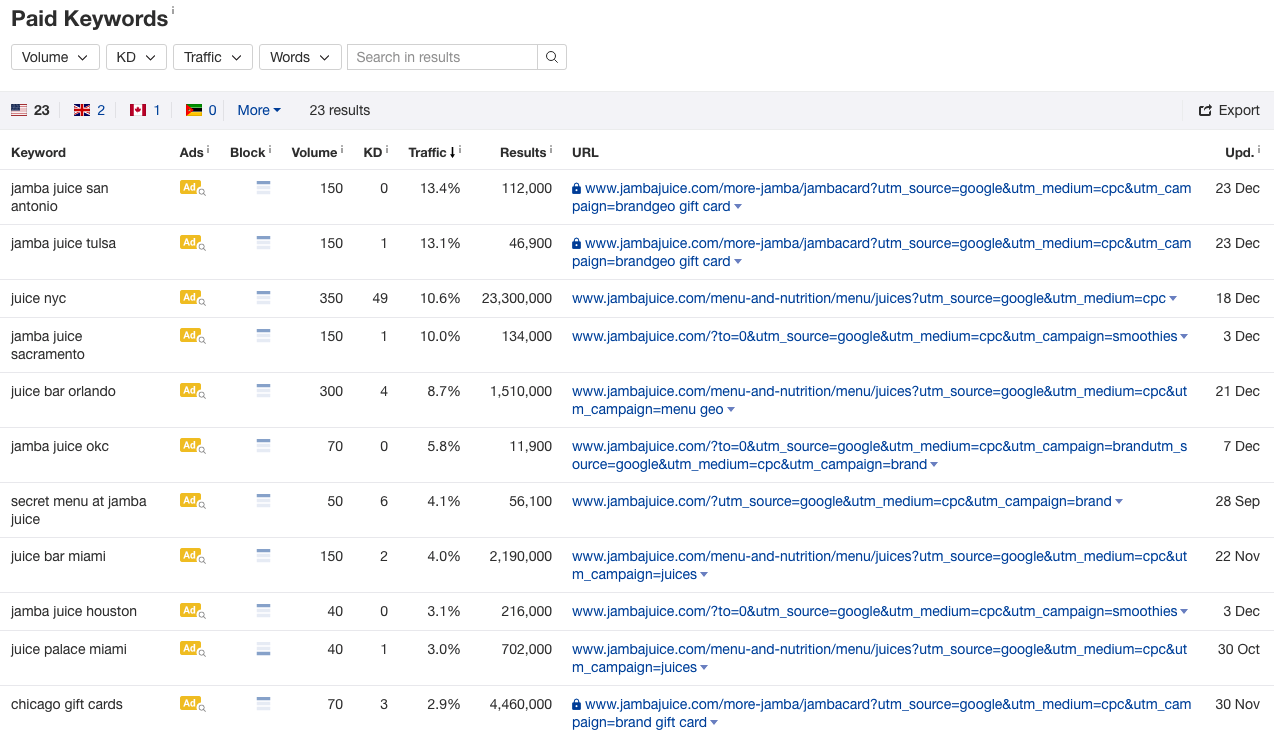
Then you can click on each ad in yellow, to spy on the PPC ad copy your competitor used, which looks like this:

Now you can write ad copy that beats out your competitor offerings.
You can be an overachiever and click on the URL to see how they executed their landing page design, too.
Repetition
“We are what we repeatedly do. Excellence, then, is not an act, but a habit.”
— Aristotle
I’ve heard that guy was a pretty smart dude. So I’d probably give his ancient tactic a shot.
PPC Ad Copy Tip #27: Illusory Truth Effect
Also known as the truth effect, the reiteration effect or the validity effect, the illusory truth effect is our tendency to believe that something is real or true after repeated exposure.
It might not hurt to repeat phrases or slogans from your brand in your PPC ad copy, just to bolster the idea in your visitor’s brain.
Let’s take a well-versed slogan and see how Red Bull incorporated this idea into their ad:

Not only did Red Bull include their tagline in the headline but they also expanded on it in their description line 2 with “Give wings to your ideas.”
Do you believe Red Bull gives you wings?
Maybe after seeing the ads and commercials a few more times…
PPC Ad Copy Tip #28: Use RLSA
This one’s more of a PPC tip but certainly applies to ad copywriting. Remarketing Lists for Search Ads (RLSAs) give you the golden second chance of reaching visitors who have already been to your site.
Tailor your ad copy to this repeat visitor experience and include something they weren’t able to pick up on the first time – something that adds even more value to their experience.
Your visitors are already familiar with your brand and, from their first click to your site, have already made it known their previous intent and position in the conversion cycle.
Tap into this stage that’s one step lower in the buyer’s cycle and focus your PPC ad copy on that particular visitor need.
Bonus Tip: Blow out your competitor’s ad with an RLSA ad that has a better offer.
Here’s an example:

PPC Ad Copy Tip #29: Repurpose Ad Message Across Channels
The more consistent your messaging the more likely your visitors will remember your marketing effort.
Take Nike for example. Their Just Do It campaign was consistently used for a straight 15 years.
Compare this with Reebok, who changed its slogan 14 times since 1897.
The result?
According to Marketing Week:
“Nike’s consistency seems to have paid off as, according to a US report by the Center for Applied Research, it was able to boost its share of the sports shoe market from 18% to 43% – from $877m in worldwide sales to $9.2bn – in the 10 years between 1988 and 1998.”
Take this historical concept and repeat your iconic slogans, core messaging across your ad channels.
Repurpose your marketing ad message in your social, display, search and remarketing campaigns.
As always, just be aware of your visitor’s intent and stage in the buying cycle. Visitors tend to behave differently in different channels.
PPC Ad Copy Tip #30: Testing
While not a straightforward tactic, we wanted to include testing as a reminder to keep trying new things. What worked last year, might not work this year.
Testing shouldn’t be a one time thing. If there’s something you have a hunch will work—try it.
In fact, you should regularly get into the habit of testing. If you’ve never done it before, we gotcha. Read our Scientific Guide To Ad Testing if you want to set up effective tests.
Grammar and Format
I think the below tactics don’t really need to be clarified. Grammar and formatting are both essential if you want your ads to have a clean, concise, and professional feel to them.
Simple as that.
PPC Ad Copy Tip #31: Be Concise and Specific
In Google Ads, you have a 35-character limit each in description line 1 and line 2, and a 25-character limit in the headline.
Not only are there character limits when you write and format your PPC ads, but getting to the point and being precise in your messaging can help your audience more quickly understand your offer.
According to Chartbeat, nearly 40% of visitors spend less than 15 seconds engaged on a page, which means people want their info and they want it fast.
To help get your point across more quickly, here are 10 techniques for more precise writing by Daily Writing Tips’ Mark Nichol.
- Use active voice: Remove copulative verbs like, be, is, or are
- Avoid vague nouns: These clutter sentences
- Use words, not definitions: Use a single word that explains the concept
- Avoid noun strings: Get rid of series of nouns used as adjectives
- Convert nouns to verbs: Avoid nouns ending in –tion and swap out with a verb
- Reduce verb phrases to simple verbs: Don’t bury your verbs in phrases and remove the phrase
- Replace complex with simple words: Choose simpler synonyms
- Avoid expletives: Don’t start sentences with There is, There are, or It is
- Eliminate prepositional phrases: Use noun 2’s possessive of noun 1 instead
- Reduce wordy phrases to single words: Use simple conjunctions, verbs or linking words
PPC Ad Copy Tip #32: Use Title Case and Proper Punctuation
Although Google Ads doesn’t allow for all-caps to be used, you can title case your PPC ad copy and use appropriate punctuation.
Why title case?
Periscopix conducted a test in 2014 comparing ad copy with title case vs ad copy with sentence case. Here’s what they found out:
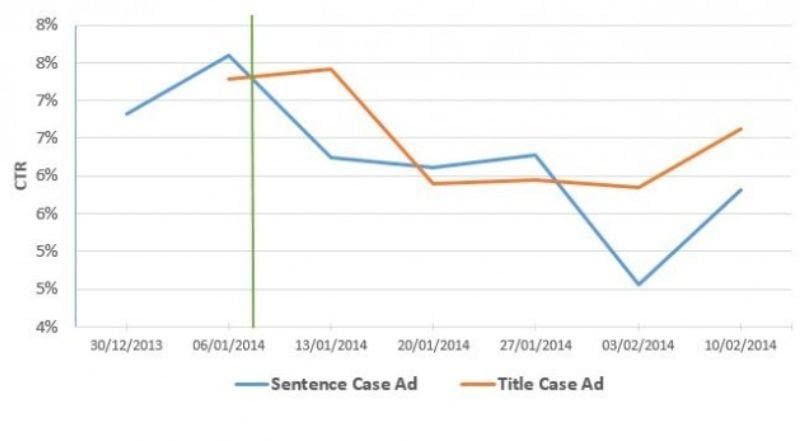
When they compared the results across devices, they found that title casing mattered more on mobile, maybe because the screen is smaller and title casing increases readability:

If you’re confused about what to capitalize, use this free title capitalization tool.
Why use proper punctuation?
The reason is obvious, but just to encourage you to be more careful, here are some examples of punctuation gone wrong:
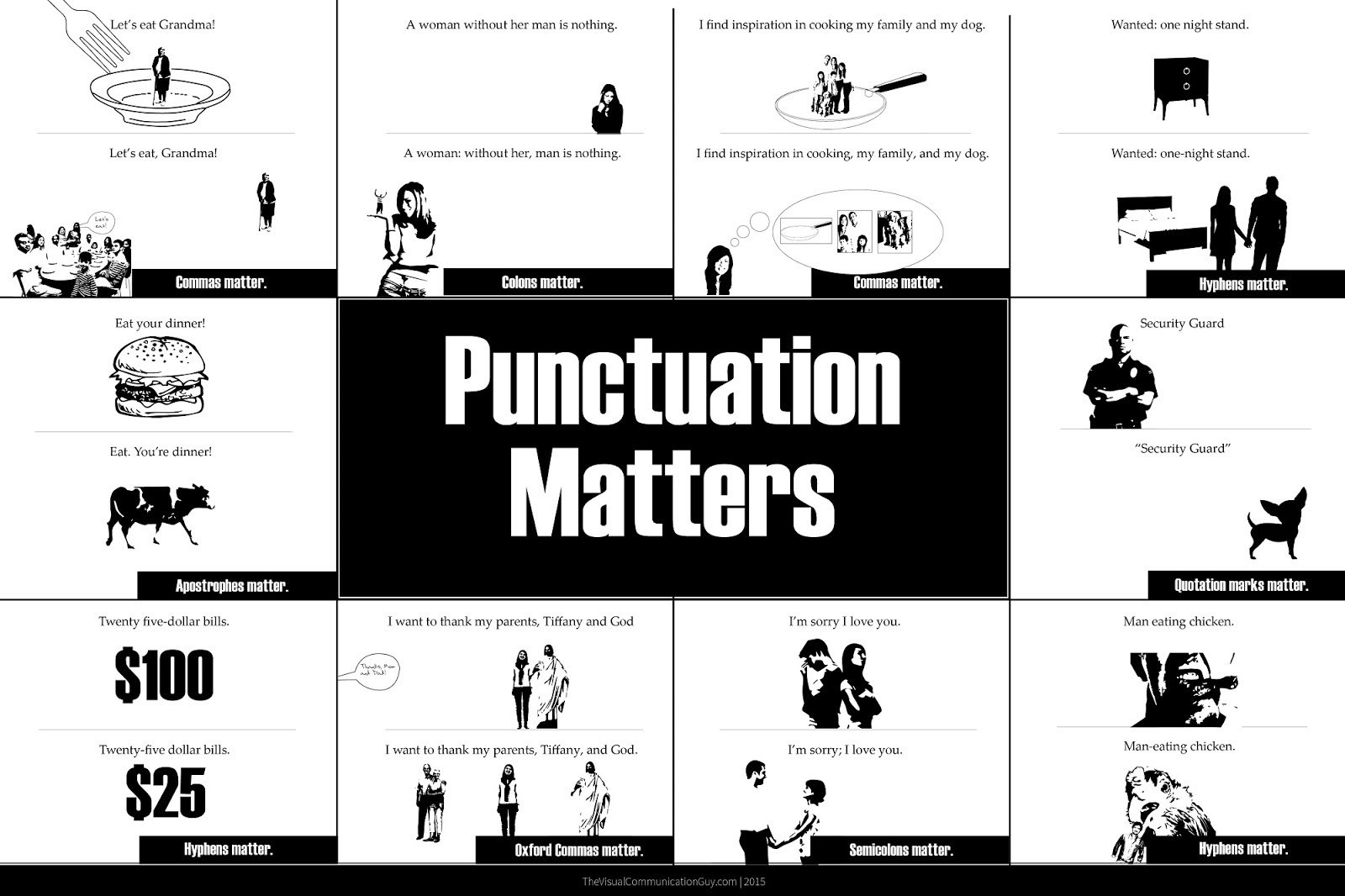
Sometimes your two description lines expand into a single line (this can happen when you have a top-ranked ad). Use the appropriate punctuation at the end of your first description text and your readability will increase.
Your visitors will appreciate you for this. The easier to understand, the better.
PPC Ad Copy Tip #33: Use Keyword-Rich Paths
By including your keywords in your ad’s path (aka display URL), you’ll not only appear to be more relevant with a non-generic dedicated landing page, but it’s also another chance to flash your keyword.
This reinforces familiarity and relevance to what your visitor is searching for.
The more specific you are in giving your visitors what they’re looking for, the better.
Here are two ads that use the words “art” and “posters” in their display URL paths:
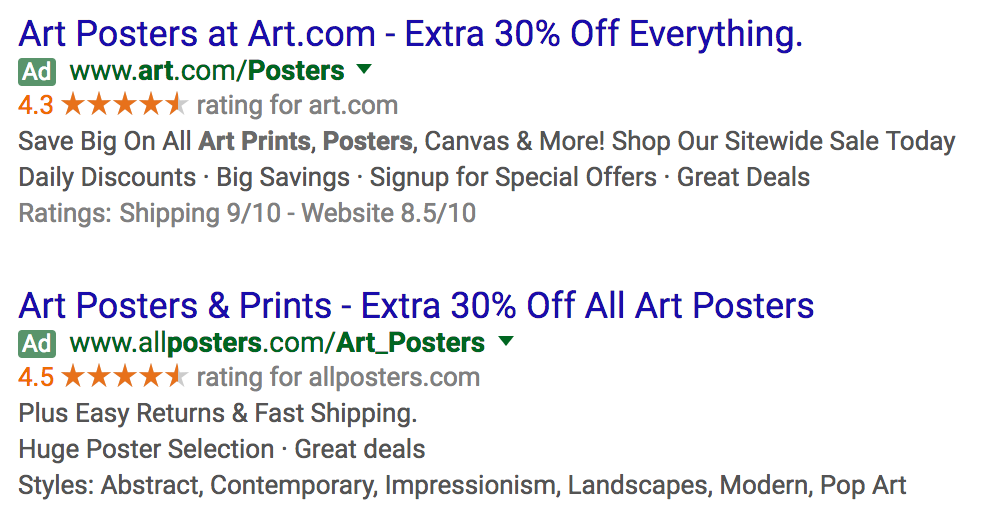
PPC Ad Copy Tip #34: Consider Memorable Phonetics
Using familiar call outs, impactful verbs, and twists on cliches can help write PPC ad copy that’ll attract attention.
Take these “workout clothes” ads for example:



Another strategy is to use alternatives in your PPC ad copy, so for example:
- next big ____
- ____ substitute
…where the blank is the keyword. That way, when your visitors are searching for something comparable you can offer your bigger and better alternative instead.
PPC Ad Copy Tip #35: Consider Including Questions
Writing PPC ad copy that features questions can help you appeal to your visitors’ points of interest more quickly.
Here’s an example of how using a question hits right on the pain point:

Here’s another example:

Using the famous five W’s + H (who, what, where, when, why, how) in your ad copy, especially in your headline, can also help you draw attention to your ad.
Here’s an example that uses how in the headline:

By using question words like how and why, the ad acts as a guide that leads you to the answer to your problem or need.
Closing Thoughts
Like everything in PPC and CRO life, test drive as many options as you can for optimal results. Experiment, A/B test, and split test your ad copy, headlines, your price framing… test all of it so you don’t miss out on the ideal versions of your PPC ad copy.
Some things to keep in mind when testing:
- Segment results: That way you can create ad copy accordingly and improve your ad copy systematically.
- Use sufficient sample sizes: Test Significance has a free tool that lets you calculate the number of needed participants for your A/B testing.
- Watch the right metrics: Sometimes CTRs are not the best measurements to base your judgments on. Go a step further and find out what’s happening all the way through conversions and actual sales.
Now that you have all these options to choose from, start blending in the tips to find the recipe that works best for your campaigns.
If you find a good example, send it our way. We’re always keeping our eyes open for new examples everytime we put in a new Google Search (which is probably about a gazillion times a day).